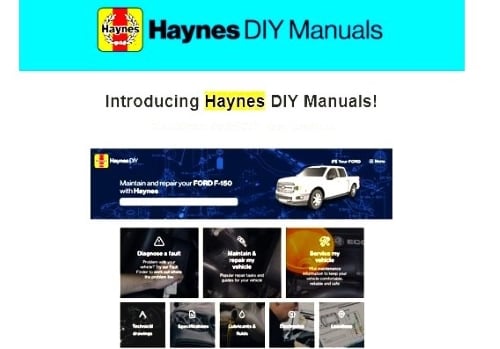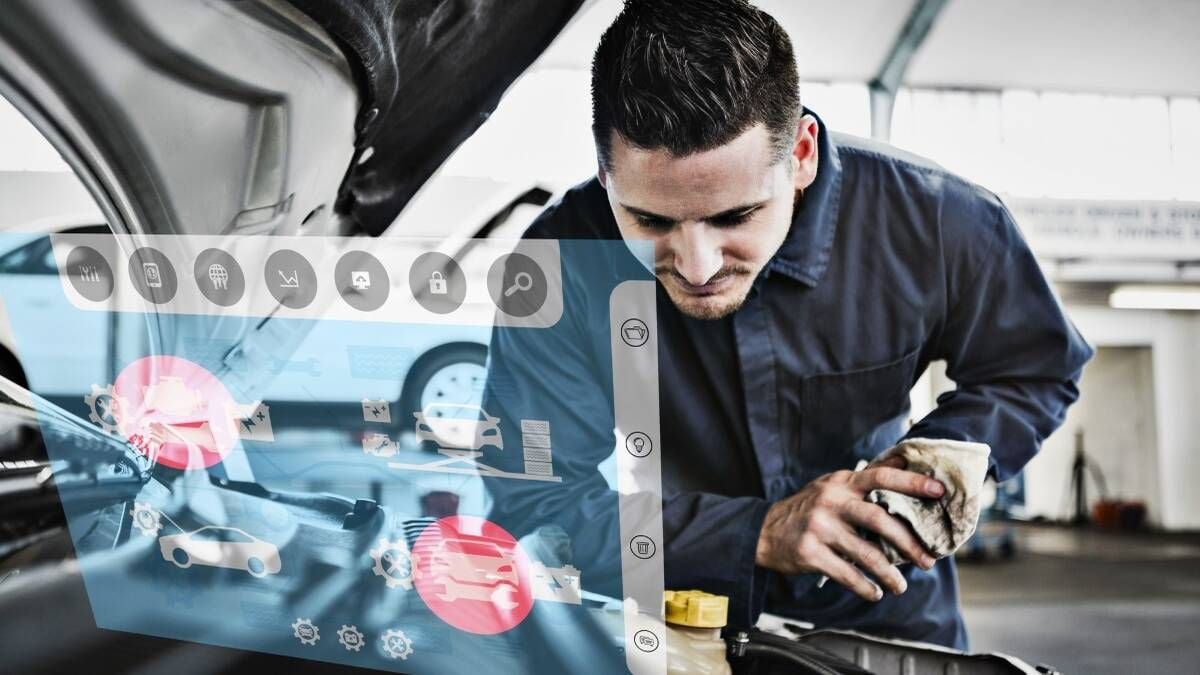In previous articles I’ve touched on the fact that a DIY car repair manual can be a valuable resource and can even replace a mechanic in certain situations―depending on the complexity of the repair, your level of expertise, and the tools you own or can “beg, borrow, or steal” as the old saw goes.
When Do I Really Need a Mechanic?
There are limitations to what a DIY repair manual can help you accomplish when it comes to repairs and maintenance tasks. In fact, the following examples are situations where it is best to seek the expertise of a professional mechanic:
- Complex Repairs: Major engine repairs, transmission overhauls, and advanced electrical work often require specialized knowledge, tools, and diagnostic equipment that may be beyond the scope of a DIY repair manual and the average enthusiast.
- Safety Concerns: Repairs involving safety-critical systems, such as brakes, steering, and airbags, should be handled by trained professionals to ensure they are performed correctly and safely.
- Warranty Concerns: This one is a biggie. If your vehicle is still under warranty, attempting DIY repairs could void the warranty if not performed to manufacturer specifications. Plus, the money spent doing it yourself when a warranty guarantees a free fix rarely makes good economic sense. Why not use the money saved through the warranty toward better tools and supplies for your next maintenance task?!
- Lack of Experience or Tools: If you're not comfortable working on cars or don't have access to the necessary tools and equipment, it is a better decision to leave the repair to a professional who can ensure a repair is done correctly. And if it isn’t, the mechanic can be held responsible for the repair.
When Is Armed With a Car Repair Manual and Basic Tools Enough to DIY?
The surprising fact is that despite the complexity of modern cars, many models still possess relatively simple maintenance and repair tasks well within the capabilities of most people. In fact, the following examples are those that will save you a significant amount of money―more than enough to cover the cost of a well-stocked basic tool set in just one year.
- Basic Maintenance: Routine tasks such as oil changes, air filter replacements, and brake pad replacements can often be done by following the instructions in a DIY repair manual. These tasks typically don't require advanced knowledge or specialized tools.
- Minor Repairs: Some minor repairs, like replacing a headlight bulb, fixing a leaky hose, or replacing a battery, can be successfully completed using a DIY repair manual. These tasks usually involve straightforward procedures and don't require specialized equipment. However, there are some important caveats to switching batteries.
- Diagnostic Work: Many DIY repair manuals include diagnostic procedures to help you identify the cause of common problems, such as engine misfires or electrical issues. With the right tools and guidance, you may be able to diagnose and resolve these issues on your own. However, be forewarned that good diagnostic technique is a skill honed by experience over time. Even good mechanics get off track every now and then when the signs and symptoms of an ailing car do not always follow a diagnostic tree diagram flow.
- Simple Parts Replacements: If a specific component in your vehicle needs to be replaced, such as a starter motor, alternator, or thermostat, a DIY repair manual can provide step-by-step instructions for removing the old component and installing the new one.
Which Car Repair Manual Should I Use?
DIY car repair manuals typically used by both automotive enthusiasts and professionals are ones like Haynes Manuals, Chilton Manuals, Bentley Publishers (typically focused on car brands such as BMW, Volkswagen, and Audi), and my favorite―the Factory Service Manuals (FSMs), which are provided by the vehicle manufacturers themselves, and are considered to be the most accurate and comprehensive but not always beginner friendly. However, FSMs are not always easily available and when they are they can be very expensive.
Ultimately, the best DIY car repair manual depends on your specific vehicle make and model, as well as your level of expertise and the type of repairs you plan to undertake
My experience is that it is helpful to consult multiple sources―especially YouTube videos― to support the information provided for a particular maintenance or repair. Comments following these videos are helpful as well because often the comments offer some nuggets of gold for an improvement to the repair or pointing out a flaw or exception to the video advice.
A New Manual Format Available For DIY Ford Car And Truck Repairs
I will never forget my first car repair using a Haynes manual for replacing the axle boots on an old Toyota Corolla. Armed with a used bookstore bought Haynes manual, a box of Craftsman tools, and some…ok, a lot…of attitude, I was successful in replacing the severely cracked boots and repacking lube in the joints and wheel bearings as described in a step-by-step process that though understandable in theory, was more difficult to do in practice than I expected. It took me an entire Saturday and part of that Saturday night to complete the job after which I was grinning like a fool covered head to toe in grease. My spouse has pictures of that night.
Times have changed. I can do the job much quicker now with less mess…and less swearing.
And not only has my skillset and experiences improved over the years, but as it turns out…so has that trusty Haynes Manual I relied upon.
This past week I received an email alert that Haynes now offers a new and improved online DIY Manual that will “…help you take full control of your car’s repair and maintenance tasks with 10-times more coverage than a printed book and thousands of tasks covered,” according to their advertisement.

What makes this an improvement over their traditional printed manual are the included features with color photos and images as well as expanded discussions that includes:
- 1000+ tutorials, including practical Haynes tips
- Instructional videos
- Detailed instructions
- Symptom-based diagnostic search
- OBD/OBD-II fault codes and warning lights
- Up-to-date service schedule advice
- Removal and refit for every major component
- Accurate lubricant and fluid guidance
- Cooling system maintenance and support
- Steering and wheel alignment
- Accurate torque settings
Why This DIY Ford Manual Recommendation
I recently bought the advertised Haynes online manual and compared it to a print one I bought years ago titled “Ford Pickups and Bronco 1973 Thru 1979” and found the new online version much more informative and easier to use.
I especially liked the color images that add visual clarity to the step-by-step instruction with added discussion and warnings not found in the print copy. There are also numerous links to help you identify terms and components that might be unfamiliar to DIY mechanics; Including links to help you move from one related section to another.
There was also a warning about handling cooled burnt engine components during repairs that I did not know about that could save you from a trip to a surgeon.
At the very least, the ease of accessing specs such as fluid volumes, fastener torque values, and test measurements makes this improved manual well worth the one-time cost of $34.95.
What Vehicles are Covered by the New Haynes Online Manual?
The digital manuals offered include a range of 24 Ford car and truck models with years ranging from as early as 2010 to as recent as 2023 for some models. A nice plus for going digital due to print car repair manuals often follow 4 years after a models release…if at all.
Here is the link to the Haynes offer for their new online manual that I wanted to share that I believe is a game-changer for Ford enthusiasts and DIY mechanics.
And even if you have no desire to do any DIY car repairs, the manuals are invaluable as a good and easy to understand resource for fact checking a repair that a mechanic or service center tech says that your car needs.
For additional DIY related articles, here are three useful ones for your consideration:
- Bad Husband Car Repair Projects
- Car Oil Change Maintenance Disaster
- Fake Online Parts Get DIY Mechanics in Trouble
Timothy Boyer is an automotive reporter based in Cincinnati. Experienced with early car restorations, he regularly restores older vehicles with engine modifications for improved performance. Follow Tim on Twitter at @TimBoyerWrites and Facebook for daily news and topics related to new and used cars and trucks.
COMING UP NEXT: Most Reliable 200K Mile Car for $500?
Image source: Deposit Photos





